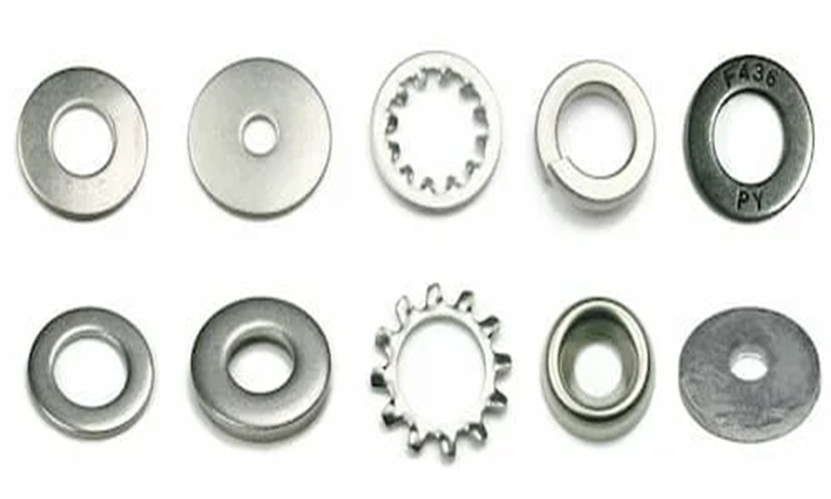As time passes, bolted nuts and different types of threaded fasteners may loosen up as a result of friction and joint movement. This is when lock washers are used to hold those objects in place. Not only are they an affordable option but they are also an easy way to keep threaded fasteners steady over a long period.
Lock washers come in several different types and sizes, and all of them are widely used in the manufacture of aircraft and in many structural applications where the loss of connections can have bad safety consequences.
If by any chance you are wondering how they work, below we provide you with an engineer’s guide for using lock washers.
Table of Contents
The Basics

A lock washer, like other types of washers, distributes the load of the fastened object more evenly. Bolts may loosen their grip over time and if installed in a piece of equipment or a machine, they may gradually unscrew and eventually find their way out of the threading hole where they were initially installed. This is prevented with lock washers as they secure the bolt in place.
Even if heavy vibrations are produced by the equipment or the machine, the bolt won’t be able to loosen if it is properly secured with a lock washer. Some of the most common types of lock washers are split, spring, and wedge washers.
Assembling a Lock Washer
You should first place the lock washer under the threaded fastener. When used accurately, the lock washer will hold the nut or other threaded fastener in the right place. To help the lock washer accomplish this, put it on first below the fastener. If your task calls for other washers or hardware elements, place them before the loch washer so that it can hold them correctly in place.
The next thing you should do is make sure the washer is tight against the fastener and other surfaces. It must press against both the threaded fastener and other adjacent surfaces and achieve a tight connection. If a tight connection isn’t created, press down the fastener. This is especially important when dealing with lock nuts which demand that the grooves of a toothed washer lock together with the nut’s grooves.
For small jobs, you should tighten your nut or threaded fastener by turning a wrench or ratchet clockwise until the fastener is firm. For large projects, consult your manual or nut head markings for a specific torque value, and then tighten your fastener to the specified amount by using a torque wrench.
To make sure that the lock washer is operating correctly, check to see that the teeth on your washer are fully covered by the nut or fastener head. If it isn’t operating as it should, loosen the nut or threaded fastener and fix the washer.
Removing Lock Washers
When you want to remove a lock washer, then you should proceed by removing the nut or threaded fastener holding the washer in place. You can attach a basic wrench or vise-grip and start turning it counter-clockwise. Feel free to use a strong tool such as a pipe wrench for stuck nuts and threaded fasteners.
If by any chance you are removing a split washer, make sure to place the screwdriver head below the washer or inside the split and start pushing. Place your screwdriver head under a tooth and push up if you are removing a washer with teeth, and repeat with more teeth if needed. When it comes to other washers, place the screwdriver head below the washer and push it up.
If too much pressure is put on the washer, it may even break when removed. If you’re unable to get the washer off, spray it with lubricant. Another important thing is to refrain from using a split lock washer or washer that is worn out and damaged.
Final Thoughts
Lock washers are available in different styles but they all work in quite a similar way. They are typically used with a nut and you can slide them over the exposed shank of a bolt and then secure them with a nut.
Some washers consist of a solid ring of metal while others are cut or split open, and even have inner and outer-facing teeth. Their main role is to protect bolts from loosening, especially when exposed to strong vibrations.
Related posts
Recent Posts
How Can I Find The Best 3PL Services Company Online In Virginia?
In the world of logistics and supply chain management, which is bursting with activity, finding a good third-party logistics (3PL)…
Sharding and Scaling Solutions: Bitcoin and Harmony
Bitcoin and Harmony – Blockchain technology has transformed the way we think about financial transactions and data security. However, as…